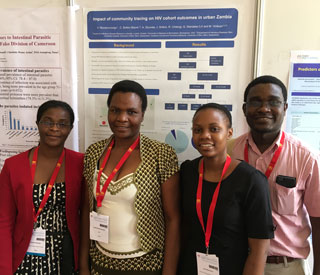Principal Investigators


The overarching aims of IeDEA-SA are to conduct clinical, epidemiological and health services research in order to provide answers to the questions that clinicians, programs and ministries of health consider fundamental to HIV care and treatment strategies in Southern Africa; to inform HIV/AIDS, TB, cancer and mental health service delivery in the region, to increase the capacity for delivering antiretroviral therapy (ART), and, ultimately, to improve the prognosis of people living with HIV and AIDS in Southern Africa.
As the region with the greatest number of HIV+ adults and children and a sizable co-morbidity burden, the scientific agenda responds to the operational and clinical research priorities identified by the World Health Organization (WHO) and opinion leaders in the field and focuses on questions that cannot be answered by one cohort. IeDEA-SA’s potential is widely recognized by information consumers, including WHO and UNAIDS, and the HIV Modelling and MESH consortia. IeDEA-SA is also leading in innovations, from novel approaches to statistical modelling to linkages with other records including national death and cancer registries.
The specific aims of IeDEA-SA are:
1. To study outcomes along the continuum of HIV care in adults
2. To study outcomes in pregnant women, infants, children, and adolescents
3. To study non-communicable diseases (NCDs), hepatitis B and sexually transmitted infections (STIs)
4. To study the clinical and public health epidemiology of TB
5. To study cancer prevention, burden and care
6. To study mental health and substance use disorders



Allison has a BA in Women’s Studies and received her MA in English Linguistics from the University of Bern in 2020. Her background is in education and she has been working for many years as a freelance editor, with clients in academia and the healthcare field. As of 2023 she is the Program Management Assistant for IeDEA-SA at ISPM.

Confidence is a qualified software developer and has completed a PostGrad Degree in Healthcare Technology Management. He is passionate about data and maintaining the quality. He also holds a N.Dip Information Technology (Software Development) in C++ and has a strong background of PHP Application Development, and certificates in Project Management in Global Health, and Leadership and Management in Health both obtained at the University of Washington. His passion is to technically improve the health care system throughout Africa and worldwide.

Orestis is a physicist and a statistician. He received his PhD in Biostatistics in 2017, from the University of Ioannina, Greece. He is working in Bern since 2016, and his research interests are in the areas of evidence synthesis, prediction modelling and personalized medicine. He is providing statistical support for IeDEA projects.

Nathalie is an epidemiologist and environmental health professional. Her research interests are mainly focused on infectious diseases, epidemiology, and implementation research. She has expertise in viral hepatitis, tuberculosis, SARS-CoV-2, and evidence synthesis. She is finishing her PhD in Epidemiology at the Medical School Hannover (MHH) in collaboration with the Helmholtz Centre for Infection Research (HZI), Germany. She is working at ISPM since 2022 and is supporting Cancer and HIV, Hepatitis, and Tuberculosis research teams.

Nicolas joined ISPM in 2022 after finishing his PhD at ETH Zurich, where he modeled the effectiveness of non-pharmaceutical interventions during the COVID-19 pandemic. His main research interests are TB transmission, public health, statistical epidemiology, and Bayesian modeling.

Amo Lehloa holds an Honors Degree in Audiology. She has several years of experience in group facilitation, lecturing and a wide range of administrative roles in the University of Cape Town. She has recently joined Centre for Infectious Diseases Epidemiology and Research (CIDER) as a project manager in her final stage of completing her Master’s in Public Health (Epidemiology and Biostatistics) at UCT. Her research focus is HIV birth outcomes, maternal health, and infectious diseases epidemiology.
She has devoted her time and efforts outside professional fields towards health services and knowledge dissemination in marginalized communities. She has led stakeholder dialogues in Sustainable development goals engaging Speakers from the United Nations Women’s League Africa, research teams and United Nations Association of South Africa-UCT on Gender equality, good health and wellbeing (SDGs 3 and 5).

Haroon is a medical doctor and actuarial graduate. His areas of interest include HIV modelling and demography, and he recently completed his MPH thesis examining treatment interruption within an HIV treatment cohort in Cape Town.

I am enthusiastic about solving challenges involved with data pipelines from different systems with a keen focus on routine data maintenance for various public health systems. My previous experience has been from Agincourt MRC/Wits Health Transition Research Unit, National Income Dynamics Study and the Centre for Actuarial Research. My background is in Demography and Statistics.

Kati is a gynecologist by training and has completed her Fellowship with the Royal Australian and New Zealand College of Obstetricians and Gynecologists. She has learned greatly from diverse clinical experiences in New Zealand, USA, Italy, Switzerland, Ethiopia, and Iran. Cervical cancer screening has been a research interest of hers for some time. The burden of cervical cancer disproportionately affects women living in low-income countries and the high prevalence of HIV in many of these setting contributes to the problem. In August 2021, she completed her PhD with the ISPM IeDEA-SA team on cervical cancer screening in HIV positive women. She now looks forward to continuing some cancer related projects as well as exploring the relationship between sexually transmitted diseases and HIV.

Wendy has a BCom and an Honours degree in Social Policy and Management. She has been working in the finance and operational side of Clinical Research for the last 6 years and is passionate about Southern Africa and finding solutions to problems.

Reshma has a background in statistics, and computational and applied mathematics. Although having worked in a diversity of application areas, she is passionate about their contribution to public health and epidemiology, and spent a number of years developing methodologies and tools related to HIV incidence estimation. Reshma has joined IeDEA-SA as a biostatistician and mathematical modeller.

Kim Anderson is a clinical epidemiologist at the UCT data centre. She has a clinical background in paediatic and adolescent HIV medicine. Her research areas of interest include health outcomes in perinatally-HIV-infected children and adolescents, morbidity in HIV-exposed uninfected children and prevention of mother-to-child transmission of HIV.

I am a clinician with an interest in HIV research. I have a Master’s degree in Tropical Medicine and International Health from the London School of Hygiene and Tropical Medicine. I have taken a leadership role as part of my research on two large multinational, multicentre cohort studies: one to evaluate targeted empirical TB treatment based on novel algorithms for early TB diagnosis in HIV-positive adults with advanced HIV disease and, another to explore the feasibility of implementing a “Universal Test and Treat” programme within a correctional services setting. My current role is to contribute to research on the impact of substance abuse amongst HIV positive adolescents and young adults and explore measures that might help mitigate those effects. I am passionate about enabling HIV prevention in marginalised communities in the African context and making it a reality.

Julien’s research focuses on modelling the dynamics of HIV transmission and of the emergence of drug-resistant strains. He trained in Paris and obtained an MD in public health and social medicine and a PhD in biostatistics and epidemiology. He arrived at Bern University in August, 2018

Veronika is a statistician, working at ISPM since 2016. She finished her PhD in Biostatistics at the University of Washington and has various research interests including survival analysis, causal inference and personalized medicine. She is involved in the statistical analyses for IeDEA.

Renee de Waal is a clinical epidemiologist at the UCT data centre. Her research focuses on antiretroviral drug safety, and her recent analyses describe the incidence of, and risk factors for, various antiretroviral side effects and treatment-limiting toxicities.

Per Maximilian von Groote is the acting Program Manager of the International Epidemiological Database to Evaluate Aids, Southern Africa (IeDEA SA) research consortium and is based at the Institute of Social and Preventive Medicine (ISPM), University of Bern. Per von Groote worked on numerous projects including research into social inequalities in functioning and disability, rehabilitation systems and services, and international public health policy, and is an executive editor of the WHO Report International Perspectives on Spinal Cord Injury. In these roles he developed an expertise in implementation research, specifically looking at the implementation of WHO global public health recommendations into national contexts. Among other participatory, stakeholder-driven and evidence-based implementation strategy development, application, monitoring and evaluation methods he conducted stakeholder dialogues in many countries including Germany, Romania, Sri Lanka, and Malaysia. He holds a Magister Artium in Political Sciences and History, a Master of European Politics and Government and a PhD in Health Science and Health Policy with a focus on implementation research.

Marie participates in multiregional IeDEA studies in the field of TB and HIV. She has a background in biology and molecular epidemiology and joined ISPM after finishing her PhD at the Swiss Tropical and Public Health Institute in 2011, having previously worked as a Research Assistant at the University Hospital of Zurich. Her main research interests are TB, drug resistance and molecular epidemiology. In addition, Marie coordinates tracing studies aiming to understand and improve retention in care among HIV-infected individuals in Southern Africa.
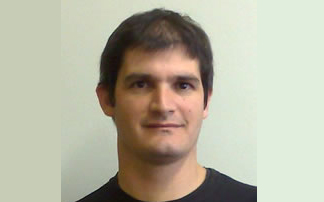
Andrew was co-Principal Investigator of IeDEA-SA from its inception until 2011. During this time, he completed his PhD on the effectiveness of ART in Khayelitsha and in the Western Cape, following adults for up to five years on ART and examining temporal trends over seven years, during a time when ART services expanded dramatically in the province. Andrew currently holds a joint appointment as Associate Professor in the Division of Public Health Medicine, UCT, and as a Public Health specialist in the Health Impact Assessment Directorate of the Western Cape Department of Health.

Morna has worked in the field of HIV/AIDS since 1992. From 1992-2000, she was Executive Director of the South African AIDS Consortium. From 2002-2011, she managed CIPRA-SA, a NIH-funded multi-centre study including CHER (early ART for infants). Since 2007 she has been project manager of the IeDEA-SA data centre at UCT, completing her MPH (Epidemiology) in the same year. In 2014 she was awarded her PhD on the evolution and effectiveness of the South African antiretroviral therapy (ART) programme. Morna has a particular interest in the invisibility of men and older individuals in African ART programmes. She is passionate about growing African research capacity. Morna is a Commissioner on the Lancet Commission on Gender And Global Health.

Cam Ha is the Data manager for IeDEA-SA cohorts in Lesotho, Malawi, Mozambique, Zambia and Zimbabwe. She works in close collaboration with the Data Manager at UCT who is responsible for the data management of cohorts within South Africa. Previously, she worked as a software engineer, spending many years specializing in data warehouse reporting within the telecom industry. Since joining the team, Cam Ha has been instrumental in optimizing the performance of the IeDEA-SA data management environment (servers and tools) and at the same time has quickly learned the data management of HIV patients.

Lukas is an epidemiologist and international health expert. His research focus is infectious disease epidemiology and molecular epidemiology of emerging pathogens threatening public health, such as nosocomial infections and more recently TB and HIV, at the interface between clinical and molecular data. As the head of the TB research group, he has been leading multiregional projects on TB and HIV within IeDEA, and molecular epidemiological studies on TB/HIV in Switzerland and sub-Saharan Africa. He has a longstanding track record working with large HIV collaborations (IeDEA, Swiss HIV Cohort Study, Collaboration of Observational HIV Epidemiological Research in Europe). During the last two years, Lukas has gained extensive field experience in low-income settings as scientific project leader and TB team leader stationed at the Ifakara Health Institute.

After completing a Master’s degree in Sociology at Goldsmiths, University of London, Andreas joined the ISPM in 2012, where he completed his PhD in Epidemiology. His PhD project evaluated the effectiveness of Malawi’s “Option B+”. Specifically, the project aims were to identify challenges to program success, and then to plan and carry-out appropriate interventions.
In 2011, the Malawian MoH developed a pragmatic public health approach to improve the low antiretroviral coverage among pregnant women in Malawi and implemented the “Option B+” protocol. Option B+ provides universal lifelong ART for all HIV-infected pregnant and breastfeeding women, regardless of CD4 cell count and/or WHO clinical stage. Following the national implementation of Option B+ the antiretroviral coverage among pregnant women in Malawi increased from 49% in 2011 to 85% in 2014 and numerous other countries have adopted the Option B+ policy.
In November 2016, Andreas was awarded the 2016 annual SSPH+ Award for the best published PhD article resulting from his PhD: “Retention in care during the first 3 years of antiretroviral therapy for women in Malawi’s option B+ programme: an observational cohort study”,

Leigh is an epidemiologist and actuary, with a particular interest in the modelling of HIV and other sexually transmitted infections. He has been involved in evaluating the impact of a range of HIV prevention and treatment programmes in South Africa. His work includes estimating the demographic impact of HIV/AIDS in South Africa. He has recently published updated HIV and demographic estimates for South Africa and for each of the provinces.

Nicky is the Senior Data Scientist for the IeDEA-SA South Africa cohort and she has been with the collaboration since 2007. Prior to that she worked as the Data Manager for the Khayelitsha cohort after returning from the UK where she worked for the Health Protection Agency as a Surveillance Officer for a number of years. She has a nursing background in pediatrics.

Patience has recently completed her masters in Medical Statistics from the London School of Hygiene and Tropical Medicine. She worked on two theses for her masters, one of which has been submitted for publication and is currently under review. The first thesis was titled “Development of a predictive model for loss to follow up and incidence of pregnancy among HIV negative female sex workers among to African cohorts”. This was part of a study taking place in Mwanza and Uganda to establish the feasibility of these women for HIV prevention trials on microbicide and vaccines (PMC3715536). The second thesis was titled “Correction of estimates of retention in care for a Uganda pre-ART cohort: a sample-based approach”. This was a retrospective cohort study that involved tracing of lost patients to establish their outcomes (dead, alive and in/out of care, lost) and merge these with clinic-recorded outcomes. Patience is currently working as a research officer/ statistician with IeDEA-SA.
She is currently working on an analysis of virologic suppression rates in children starting efavirenz-based ART regimens stratified by PMTCT. Patience is also developing a concept on viral load trajectories in adolescents
and young adults.

Gem is an epidemiologist at the UCT Data Center, currently focusing on research related to pediatric HIV. She has a Masters in Epidemiology from the London School of Hygiene and Tropical Medicine, an interest in infectious diseases, and has worked as a field epidemiologist primarily doing operational research to address specific challenges in the delivery of primary care to those with HIV.

Eliane is a medical doctor with an MSc in Epidemiology (2015) from the London School of Hygiene and Tropical Medicine and an MSc in Statistics (2018) from the University of Neuchâtel. Her research focus is HIV-related cancer and oncogenic viruses with a special interest in cervical cancer prevention among women living with HIV. In 2018, she was awarded a 2-year fellowship from the Swiss Cancer Research foundation to study novel cervical cancer screening methods at the University of North Carolina. She spent the first part of her fellowship at the campus in Chapel Hill, USA, and the second part at a cervical cancer screening program in Johannesburg, South Africa. In 2020, she returned to the Institute of Social and Preventive Medicine (ISPM) at the University of Bern where she took over the lead of the IeDEA-SA cancer research group.

Gilles is an attending physician at the Department of Infectious Diseases, University Hospital Bern and a senior research fellow. He currently leads several HIV and viral hepatitis cohort projects within the framework of IeDEA-SA and IeDEA-West Africa as well as in the Swiss HIV Cohort Study. He has recently been granted a three-year Ambizione-Prosper fellowship from the Swiss National Science Foundation to study HIV and Hepatitis B coinfection in sub-Saharan Africa.

Elizabeth is the project manager for the IeDEA-WHO Collaboration since November 2014. This project formalizes collaboration between the IeDEA network and the WHO by defining a core set of indicators and analyses that can contribute in a reliable and predicable way to global ART reporting. Before joining ISPM, she worked at UNAIDS coordinating data collection/dissemination of HIV/AIDS estimates and was responsible for producing summary analyses of the HIV/AIDS epidemic to inform policy and strategy within the organization. She has previously held positions at WHO, UNAIDS and NGOs and has a background in Biology, Environmental Science and Epidemiology. Her current research focus is HIV retention in care.




John joined the ISPM in November 2022 with the Cancer Research Group and with the University of Bern where he is doing his PhD. He is working on mathematical models evaluating various Cervical Cancer screening strategies, as well as their (cost-) effectiveness in Zambia. He obtained his MSc. Statistics from the University of Ghana.

Tiana joined the ISPM in 2022 to pursue a PhD, aiming to implement and evaluate a novel targeted sequencing assay at two HIV clinics in Southern Africa for the rapid detection and characterisation of drug resistant tuberculosis. She has a BSc in Biochemistry and Genetics from the University of Cape Town and an MSc in Chemical Biology from the University of Genève.

Tinei joined the ISPM team in 2019 to pursue a PhD. His PhD work looks at antiretroviral drug resistance patterns among HIV patients with history of treatment failure switching to dolutegravir. He is a recipient of the SSPH+ Global PhD Fellowship Program. Tinei is a Biomedical Scientist trained at the University of Zimbabwe College of Health Sciences with a Master of Philosophy in Medical Laboratory Sciences. He has worked in the field of HIV since 2006 when he joined Newlands Clinic, one of the IeDEA-SA sites in Zimbabwe, and has been the Laboratory Manager since 2007. He became part of the Newlands Clinic Research Team in 2014 and has been involved in various HIV research projects since then.
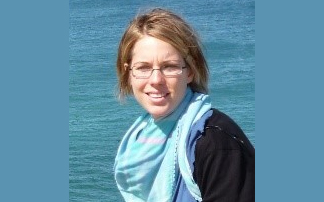
Kathrin has a MSc in Physiotherapy and in Epidemiology. As a physiotherapist she treated many patients with HIV, TB and other conditions related to these diseases in South Africa. With her research in TB and HIV within the IeDEA consortium and her master in Epidemiology she better undertaken theses diseases. She completed her PhD in the field of TB and HIV in 2021 and continues to work within IeDEA-SA for the TB aim.

Maša is a medical doctor trained at the Faculty of Medicine, University of Belgrade, Serbia. In 2017 she obtained her Master’s degree in Health Sciences (Epidemiology) from Erasmus University Rotterdam in the Netherlands. Her thesis was titled: „Disability-adjusted life years averted versus quality-adjusted life years gained: a model analysis for breast cancer screening“. Her research work was part of the EU-TOPIA project which aims to systematically evaluate and quantify the harms and benefits of screening programmes for breast, cervical, and colorectal cancer in all European countries. Afterwards, she was working as a teaching assistant at the University of Belgrade, Faculty of Medicine, Department of Social Medicine in Serbia. She has received the SSPH+ Global PhD Fellowship Program in Public Health Sciences funded by Marie Sklodowska-Curie Actions and organized by the Foundation Swiss School of Public Health, and she joined the ISPM team in April 2019 to pursue a PhD. She is working on Cervical Cancer Prevention and Care Cascade for women living with HIV in sub-Saharan Africa. The overal objective of her work is to develop a standardized data sets for monitoring cervical cancer screening for women living with HIV in sub-Saharan countries.

Serra completed her Master’s degree in Public health from the Catholic University of Central Africa, Cameroon in 2014. Her dissertation focused on “Depression and health related quality of life in patients on antiretroviral therapy in a rural health district in Cameroon”. Before joining the Institute of Social and Preventive Medicine (ISPM) to pursue a PhD in 2018, she was the project leader for a clinical trial comparing Dolutegravir and Efavirenz 400, both combined with Tenofovir and Lamivudine for the initial treatment of patients infected with HIV in Cameroon. Results from this trial were recently “welcomed” by the World Health Organization following the updated recommendations for first and second line antiretroviral regimens.
Her PhD work focuses on “Developing a Cervical Cancer Prevention and Care Cascade for low and middle-income countries”. This tool will effectively monitor screening programs to optimize gains (curb cervical cancer-related morbidity and mortality) as well as facilitate program scale-up for women living with HIV in LMICs.

Tafadzwa is currently completing her MSc degree in Epidemiology and Biostatistics from the University of the Witwatersrand. Whilst studying for the degree, she has concurrently been on a Cancer Epidemiology Fellowship with the South African National Cancer Registry working on a project titled, “The Burden of cancers attributable to HIV in the South African Public Health Sector, 2004-2014: a record linkage study.” This project is a sub-study within the South African HIV Cancer Match study, an IEDEA supported record linkage project. The sub-study aimed to determine the additional cancer risk that individuals with HIV have compared to those who are HIV negative. Her findings showed that people living with HIV had a higher risk for AIDS defining, eye, skin and anogenital cancers. For her PhD, she intends to focus on evaluating the effectiveness of the South African cervical cancer screening guidelines in the control of cervical cancer. Cervical cancer remains the major cause of cancer related deaths amongst women in South Africa despite having a screening programme since 2000.

Thoko joined the ISPM team in 2018 to pursue a PhD, looking at the impact on viral load suppression in HIV patients in Malawi with the introduction of tenofovir/lamivudine/dolutegravir as the first-line treatment regimen. He is a medical doctor trained at the Malawi College of Medicine, with a Masters in Tropical and Infectious Diseases from the Liverpool School of Tropical Medicine, University of Liverpool. Since 2015 he has worked with the Department of HIV and AIDS in the Malawi Ministry of Health where he is the Deputy Director of the HIV program in Malawi. He focuses on monitoring and evaluation and development of HIV policies for biomedical interventions.

Belinda is a public health researcher with experience working in Uganda, Zambia and Zimbabwe. She completed her Master’s at the London School of Hygiene and Tropical Medicine (LSHTM) with a focus on Infectious Disease Epidemiology, and now joins the ISPM IeDEA-SA team working towards a PhD focusing on the Epidemiology of Non-Communicable Disease Risk factors among HIV-infected adults in Southern Africa.
The global scale up of antiretroviral therapy is promoting immunologic recovery and increasing lifespan among ART-treated adults. This population now face emerging challenges of non-communicable diseases (NCDs) and related cardiometabolic risks. The overall objective of her work is to increase current knowledge on the epidemiological determinants of modifiable NCD risk factors among HIV-infected adults in Southern Africa. Specifically she seeks to assess the association between HIV-infection and cardiometabolic risk factors and determine the impact of ART on the dynamic of cardiometabolic risk factors in urban Zambia and Zimbabwe.

Gem is an epidemiologist at the UCT Data Center, currently focusing on research related to pediatric HIV. She has a Masters in Epidemiology from the London School of Hygiene and Tropical Medicine, an interest in infectious diseases, and has worked as a field epidemiologist primarily doing operational research to address specific challenges in the delivery of primary care to those with HIV.

Mmamapudi completed her MPH in 2016, her thesis sought to understand the epidemiology of diabetes in a high tuberculosis and HIV context Khayelitsha, South Africa. She was also involved in a study that determined the association between TB and diabetes. (odds ratio 2.4; 95% confidence interval 1.3–4.3) in a study population with high HIV prevalence (64%) (1). Building on her MPH work, she is currently working on her PhD project that seeks to understand the effect of diabetes, HIV and household overcrowded living conditions on the South African TB epidemic. She will develop an individual-based model to represent TB dynamics in South Africa. The model will be used to: a) understand and explain the observed gender and age differences in TB; b) assess how effective current TB control interventions have been in reducing TB incidence in South Africa up to the current time c) determine the population attributable burden of tuberculosis due to HIV, diabetes, and household overcrowded living conditions; and d) evaluate the potential impact of current TB control interventions that target to reduce HIV, diabetes and household overcrowding in addition to current TB control interventions

Victoria completed her MPH (Epidemiology) degree in 2016 at the University of Cape Town. Her thesis was titled “Prevalence and determinants of unplanned pregnancy in HIV-positive and HIV-negative pregnant women in Cape Town, South Africa: a cross-sectional study” She described the importance of preventing unplanned pregnancies among HIV-positive women as one of the crucial tools for the prevention of mother-to-child transmission of HIV (PMTCT) in high burden, resource-limited settings such as South Africa. The study presented key differences between HIV-positive and HIV-negative women regarding pregnancy intentions and family planning practices. Younger age (<24 years old), increasing parity and contraceptive use in the year prior to conception were associated with an increased probability of an unplanned pregnancy. The manuscript was published in BMJ Open (Iyun et al. 2018).
Victoria is currently working on her PhD project at the University of Cape Town. Her PhD is focused on understanding the effect of expanded early infant diagnosis (EID) and early infant antiretroviral therapy (EIART) guidelines and practices, on patient and program-level outcomes among HIV-infected infants and young children in resource-limited settings.

Priscilla recently completed her Master’s in Public Health (Epidemiology) degree at the University of Cape Town. Her thesis was titled: “HIV viral load monitoring in HIV-infected pregnant women established on antiretroviral therapy in Cape Town, South Africa”. The literature review discussed the role of HIV viral load and antiretroviral therapy (ART) on vertical transmission of HIV and compared the existing ART monitoring strategies and management of viremia in resource-limited settings. She described public sector HIV viral load testing patterns (frequency and timing) and HIV viral load levels for pregnant women conceiving on ART, before and during pregnancy. In addition, the analysis assessed factors associated with having a HIV viral load (VL) test performed and being viremic during pregnancy. Defining viremia as a VL >1000 copies/mL, the analysis concluded that 80% of women had VL tests done during pregnancy, and of these approximately 88% had VL.
Priscilla is currently working as a Research Officer and has just begun her PhD at the University of Cape Town. Her PhD will focus on the models of care and the models of transition to adult HIV services for HIV-infected adolescents within Southern Africa.

Kati is a gynecologist by training and has completed her Fellowship with the Royal Australian and New Zealand College of Obstetricians and Gynecologists. She has learned greatly from diverse clinical experiences in New Zealand, USA, Italy, Switzerland, Ethiopia, and Iran. Cervical cancer screening has been a research interest of hers for some time. The burden of cervical cancer disproportionately affects women living in low-income countries and the high prevalence of HIV in many of these setting contributes to the problem. In August 2021, she completed her PhD with the ISPM IeDEA-SA team on cervical cancer screening in HIV positive women. She now looks forward to continuing some cancer related projects as well as exploring the relationship between sexually transmitted diseases and HIV.

Anthony is a PhD student working on HIV drug resistance (DR) in Sub-Saharan Africa at ISPM in Bern. He joined the IeDEA team in February 2017, after having completed studies in applied mathematics. More specifically, the aim of his project is to develop a mathematical model in order to study evolution over time of both acquired and transmitted drug resistance (ADR and TDR respectively). The model will also be able to assess the effectiveness of different kinds of treatments/interventions in order to curb the spread of DR.

Olivia joined the ISPM in November 2006 to work on her PhD in epidemiology, using data from ART-LINC and the IeDEA collaboration. The focus of her PhD was analysis of treatment outcomes according to individual and program characteristics. During her PhD she spent time in Lilongwe, Malawi and South Africa working with collaborating sites and attending several courses. During this time she became increasingly independent, taking the lead in writing grant applications and scientific publications, presenting work at national and international conferences and supervising others. Olivia successfully defended her PhD (“The clinical and public health epidemiology of combination antiretroviral therapy in low-income settings: collaborative analyses of cohort studies”) in November 2009. Since April 2011 Olivia heads the research group ‘HIV and Hepatitis’ at the ISPM. This research group is concerned with the clinical and public health epidemiology of HIV/AIDS and with co-infections with hepatitis C. The main focus is on long term outcomes of ART, mother-to-child transmission of HIV in Malawi and the development of mathematical simulation models in the field of HIV and hepatitis C.

Andrew was co-Principal Investigator of IeDEA-SA from its inception until 2011. During this time, he completed his PhD on the effectiveness of ART in Khayelitsha and in the Western Cape, following adults for up to five years on ART and examining temporal trends over seven years, during a time when ART services expanded dramatically in the province. Andrew explored associations with a range of clinical outcomes, and regimen durability and tolerability are described, together with regimen effectiveness when ART is administered to patients co-infected with TB. The results chapters are in the form of published/submitted papers [1, 2, 3, 4, 5] covering: correction for under-ascertainment of mortality through linkages with the death registry; the tolerability of commonly-used first-line ART; the effectiveness of ART co-administered with TB treatment; an in-depth description of the Khayelitsha population demonstrating comparability with many urban settings in the region; and evidence that outcomes have not been compromised by the expansion of ART services. The thesis concludes that the analyses provide reassurance that the anticipated benefits of ART have not been eroded by health system weaknesses or contextual challenges.
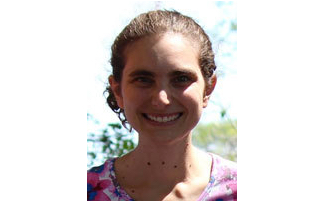
Lucy’s MSc in Statistics thesis analyzed time to ART initiation, exploring the effect of factors that predict how soon a patient initiates ART and the causal effect of ART initiation on the survival of patients. She used observational data on patients co-infected with HIV/TB from three clinics in the Western Cape. Using observational data presents a number of statistical challenges: measurements on patients are not always recorded within time intervals of interest, nor are they always recorded regularly; treatment of patients is not assigned at random, so that patients who have a worse prognosis a-priori will initiate ART sooner than those who have a better prognosis, which could bias the estimated effect of ART initiation on survival. Lucy therefore used methods to reduce potential biases, as well as to explore the sensitivity of assumptions that she makes where possible.
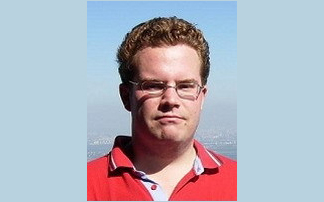
Janne’s PhD thesis consisted of mathematical modelling studies comparing the potential benefit and cost-effectiveness of routine viral load monitoring of ART in sub-Saharan Africa. The main task was to develop a mathematical model for disease progression of HIV under ART. The model was used to compare the potential transmission from patients on ART with or without routine viral load monitoring, and to explore if the large observed differences in mortality between IeDEA-SA sites with and without viral load monitoring could be attributed to the monitoring strategy. The cost-effectiveness of viral load, CD4 and clinical monitoring were also compared. The results showed that routine viral load monitoring is very likely a cost-effective intervention, but mainly due to its indirect benefits, such as the ability to detect poor adherence and prevent treatment failures. Routine viral load monitoring is also expected to prevent about one third of HIV transmissions caused by treated patients. The PhD project included also other collaborative studies: a statistical analysis of first-year mortality and loss to follow-up in the entire Malawian national ART database, and three systematic reviews of pre-ART retention among adults, children, and pregnant women. Janne Estill continues to work at the ISPM as a postdoctoral researcher. He develops mathematical models and cost-effectiveness analyses for the disease progression and transmission for HIV, viral hepatitis and other infections, focusing in particular on the different patient management strategies of ART for HIV infected adults and children in sub-Saharan Africa.

Mary-Ann has been co-Principal Investigator of IeDEA-SA since 2011. Her PhD thesis was entitled ‘Outcomes and effectiveness of antiretroviral therapy for HIV-infected children in South African treatment cohorts’. The thesis reviewed the outcomes of published studies of pediatric ART cohorts in Africa, described outcomes for children receiving ART in South Africa and examined determinants of mortality and generalizability across Southern Africa. Temporal trends in characteristics at ART were also examined. The measurement of treatment success in resource-limited settings was reviewed by examining virological failure and assessing the diagnostic accuracy of immunological criteria for identifying virological failure. The results chapters were presented in the form of published/submitted papers based on data from IeDEA-SA [1, 2, 3, 4, 5, 6, 7] . The thesis concluded that access to ART for children had increased, with good outcomes. HIV cohort research is important in evaluating the safety and effectiveness of different models of care, treatment and monitoring strategies.

Laetitia’s MPH thesis determined the probability of and reasons for stopping/changing of antiretroviral drugs in South African pediatric sites of IeDEA-SA. The study population included all HIV infected children ≤16 years of age at ART initiation with a documented date of birth and initial regimen of ≥3 antiretroviral (ARV) drugs, and attending any one of 7 South African pediatric HIV clinic sites that contribute data to the IeDEA-SA database. Data from 5517 children with median [IQR] age at ART start of 42 [15-82] months were included in the analysis. By 3 years on ART, 81% of children alive and in care were still taking their initial regimen. Drug stops/changes for reasons other than treatment failure were mainly due to potential drug interaction in the 1st year on therapy, while in the 3rd year toxicity, potential drug interaction, treatment simplification (e.g. changing from syrup to tablet formulations) and other unspecified reasons were the main contributors. Nevirapine, zidovudine and stavudine were responsible for most treatment-limiting toxicity by 2 years on ART. Nevirapine toxicity occurred almost entirely in the first six months whereas stavudine toxicity occurred mostly after 1 year of therapy. Half of the zidovudine toxicity occurred in the first 3 months with the remainder evenly spread over the following 21 months. Laetitia concluded that pediatric ART durability in resource-limited settings was good but complex, with treatment changes due to toxicity, treatment failure and drug interactions, as well as treatment simplification. After completing her MPH, Leatitia worked with the Infectious Diseases Research Collaboration in Uganda as a study coordinator of an implementation science project called STARTs (Streamlined ART Initiation Strategy study), which was aimed at starting as many HIV-infected adults on ART as possible once they were eligible by CD4 count. Leatitia is currently doing an MMED in Pediatrics and Child Health at Makerere University in Uganda.
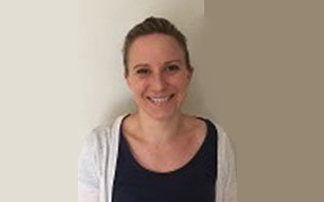
Mireille completed her MPH at the UCT in the epidemiology/biostatistics stream. Her thesis was entitled: “Outcomes of Infants Starting Antiretroviral Therapy in Southern Africa, 2004–2012” and included an extensive literature review and a manuscript prepared for publication. The literature review confirmed that there was limited published data on the outcomes of infants starting ART in routine care in Southern Africa. Subsequently she conducted an analysis of prospectively collected routine cohort data contributed from sites to IeDEA-SA. The manuscript described the demographic, baseline disease and therapeutic characteristics of just under 5000 infants at initiation of treatment and describes outcomes relating to growth, disease progression, programmatic outcomes and mortality. The analysis further assessed those baseline factors associated with treatment failure (virological) and mortality. The study described severe baseline disease severity, suboptimal responses to ART and high loss-to-follow up in infants starting ART in Southern Africa between 2004-2012. Severe baseline disease characteristics and initiation of ART before 2010 were associated with an increased probability of death. The manuscript was published in JAIDS (Porter, Davies et al. 2015). Mireille is currently acting as a Clinical and Research Consultant in a project to produce a Health Promotion Tool for Primary Health Care for the National Department of Health South Africa.

Morna has project managed the IeDEA-SA Data Center at UCT since January 2007. In 2008, she completed her MPH thesis based on data from one IeDEA-SA cohort. In 2014 she was awarded a PhD for her thesis ‘The evolution and effectiveness of the South African antiretroviral therapy programme’. Her thesis presented five inter-related analyses using data from South African sites within IeDEA-SA in the form of published/submitted papers. The studies included anonymized, patient-level data on adults starting ART to describe patient characteristics and enrolment, and to explore program outcomes including mortality, loss to follow-up and transfers out, as well as chapters focusing on the impact of gender and age on program outcomes. The numbers of patients included in the analyses ranged from 19 481 (restricted to cohorts with South African national identification numbers) to 83 592 adults, followed for up to 168 789 person-years of observation. The results of the thesis lead to novel conclusions regarding the major challenges to ART program effectiveness in South Africa. While early ART programs were concerned primarily with patient mortality, increasingly the central challenges facing these services are related to their implementation and coverage. Looking forward, the South African national ART program should deliver services to patients earlier in the course of HIV disease, focusing in particular on men and patients over 50 years of age. Additional interventions are required to promote the retention of patients in lifelong chronic care while maintaining effective systems for program monitoring.
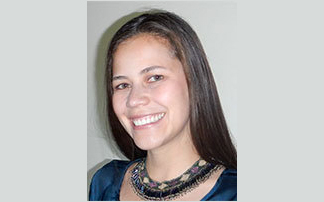
Luisa recently finished her PhD in Biomedical Sciences at the ISPM where she has been since 2011. The topic of her thesis was mathematical modelling in HIV and Hepatitis C. She used mathematical models to simulate disease progression and estimate the impact of public health interventions on health outcomes. Her projects included the development of an individual based model of pediatric HIV to estimate the impact of different strategies to monitor children on antiretroviral therapy; and a hepatitis C virus transmission model to evaluate the effect of behavioural and treatment interventions on the spread of this virus among HIV-positive men who have sex with men. Previously, Luisa studied physics with a focus on theoretical physics and applied mathematics specializing in numeric methods at the National University of Colombia in Bogotá. Luisa is very interested in mathematical modelling of infectious diseases and Monte Carlo simulations of dynamic systems in nature. Currently, Luisa is working at the ISPM on mathematical modelling and molecular epidemiology of hepatitis C virus transmission among people living with HIV.

Eliane, who is a medical doctor, has been working at the ISPM in public health since 2012. She completed her MSc in Epidemiology at the London School of Hygiene and Tropical Medicine (LSHTM) by distance learning. Her research focus is HIV-related cancer and oncogenic viruses and her MSc thesis examined the incidence rate of invasive cervical cancer (ICC) in a South African cohort of HIV-positive women. In a meta-analysis, she examined the association between HIV and human herpesvirus 8 (HHV-8), the infectious cause of Kaposi sarcoma (KS). This meta-analysis showed that HIV-positive persons were more likely to be seropositive for HHV-8 than HIV-negative persons. Another research project focused on the incidence rate of KS and associated risk factors in HIV-positive children and adults participating in IeDEA-SA. She is also working on multiregional IeDEA projects to estimate and compare ICC and KS incidence rates in HIV-positive persons across different continents.
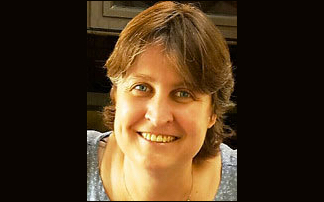
Kirsten’s MPH thesis addressed the challenge of adherence to lifelong cART whilst maintaining future regimen options for vertically infected children. This study evaluated a simplification strategy – substituting efavirenz for lopinavir-ritonavir (LPV/r) in children older than 3 years maintaining virologic suppression, thereby allowing for a once-a-day regimen and for re-use of LPV/r later on. In this cohort of children exposed to no more than a single dose of nevirapine as infant prophylaxis, the virologic outcomes in the EFV substitution group were no worse than those of children remaining on their initial LPV/r-based regimen. Kirsten has run the ARV services at the public sector New Somerset Hospital since 2010. She is about to embark on a new journey in community and family medicine, with part-time research work at UCT.

Erna’s MPH thesis addressed one of the IeDEA-SA objectives, namely to establish and describe a sub-cohort of HIV-infected pregnant women and their exposed infants. The protocol included background information on sites contributing to this cohort of HIV-exposed uninfected (HEU) infants. The literature review included maternal disease factors, the use of antiretroviral therapy and the association between feeding modality and growth, focusing on studies conducted on the African continent. The manuscript detailed the methodology, results and interpretation of longitudinal analysis of growth among HEU infants in IeDEA-SA. This cohort of HEU infants included 2621 infants from two South African sites. The median birth WAZ was -0.65 (IQR -1.46; 0.0), 51% were male and there was a median of 2 visits per infant. The feeding modalities practiced were: 0.5% exclusive breastfeeding, 7.9% unknown breastfeeding exclusivity, 78.6% mixed breastfeeding and 10.6% formula feeding. Mothers with a CD4 <200 cells/μl delivered infants with a lower birth WAZ (adjusted ß -0.253 [95% CI -0.043; -0.072], p = 0.006) compared to mothers with a CD4 ≥500 cells/≧l. Similarly, mothers who did not receive antiretroviral (ARVs) drugs delivered infants with a lower birth WAZ (adjusted ß -0.49 [95% CI -0.78; -0.20], p = 0.001) compared to mothers who received antenatal ARVs. Antenatal maternal ARVs and CD4 cell count did not have an effect on postnatal growth. Mixed effects models using maximum likelihood estimation for the longitudinal analysis of growth showed that exposure to breast milk positively influenced growth, albeit the effect was small. Overall, less severe maternal disease and the use of ARVs positively impacted birth weight. Mixed feeding was common, and any breastfeeding may have a positive effect on longitudinal growth. Since 2014, Erna has been working for the Western Cape Department of Health within the Health Impact Assessment Directorate, Epidemiology and Disease Surveillance sub-directorate.
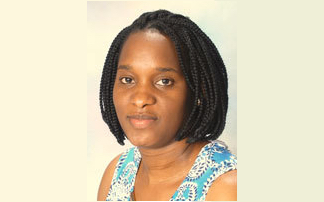
The aim of Mazvita ‘s thesis was to characterize the epidemiology of HIV-related cancers in South Africa in terms of spectrum, prevalence and incidence of cancers in HIV-positive individuals in the era of antiretroviral treatment in South Africa. This was achieved through 3 studies: (i) a probabilistic record linkage study of two IeDEA-SA ART programs providing care for adults and the National Cancer Registry in South Africa, (ii) a cross-sectional analysis of HIV testing patterns among black adult cancer patients attending a tertiary academic oncology unit in Johannesburg and (iii) a chart review of patients with AIDS-Kaposi sarcoma attending a tertiary academic oncology unit in Pretoria. She found that ascertainment of cancer in HIV cohorts is incomplete, and probabilistic record linkage is both feasible and essential for cancer ascertainment. The prevalence of cancer among HIV patients was 4%. Incidence of cancer in HIV-positive South Africans in the era of potent ART was high (overall incidence rate of 1,315/100,000 pys (95% CI 1,225-1,410)), particularly for AIDS-defining cancers and infection-related cancers. She recommended a systematic approach to cancer surveillance in HIV-positive people and the exploration and implementation of known cancer-specific prevention strategies in the HIV population. Among black adult cancer patients in Johannesburg, 33.7% tested positive for HIV; and over a third of those who were positive were unaware of their HIV status. She therefore recommended routine opt-out HIV testing for cancer patients. Among AIDS-KS patients in Pretoria, survival has improved in recent years as more patients access appropriate ART, chemotherapy and radiation therapy. Mazvita currently works as the project manager and epidemiologist for the South African HIV Cancer Match Study, which is an IeDEA-SA supported national HIV-cancer record linkage study, at the National Cancer Registry, National Health Laboratory Service.

Lyson’s PhD project aims at identifying the programmatic issues that can impede the attainment of Prevention of Mother to Child Transmission (PMTCT) of HIV potential benefits in resource limited settings like Malawi. Using routine health records collected during antenatal, delivery, ART and exposed child follow-up, his project aims at identifying factors that determine uptake and retention along the PMTCT care cascade. The health records are drawn from 19 large health facilities in the central and southern Malawi. Lyson’s first analysis was based on the ART data and it aimed at assessing factors associated with retention in care for women in the ART program after the adoption of the Option B+ approach in Malawi. He found that 17% (n-219239) were lost at six months with most of the loss occurring in the first 3 months. Compared to women who started ART for their own health, pregnant women who started ART because of their pregnancy status were more likely (OR 5.0, 95% CI 4.2-6.1) not to come for a follow-up visit after starting ART, followed by those who started while breast feeding (OR 2.2, 95% CI 1.8-2.8). Loss to follow up was therefore found to be highest among pregnant women who started ART on the same day they were diagnosed HIV positive and those treated in large clinics. A second analysis was based on the antenatal clinic (ANC) data. The analysis aimed at assessing HIV status ascertainment and its predictors during pregnancy. In this analysis he found that there was suboptimal HIV testing levels in the country at 82.3% (95% CI 80.2-85.9%) compared to the elimination of mother to child transmission (EMTCT) goal of 90%. He further found that HIV ascertainment was independently associated with higher age and attending an ANC more than once. He further observed high variability of HIV ascertainment between sites ranging from 50.6-97.7% and over time suggesting that HIV test kits shortages and insufficient numbers of staff were the major barriers to reducing MTCT. Currently Lyson is coordinating the Umoyo+ Project, a research collaboration between the ISPM and the HIV and AIDS Department of the MoH in Malawi.

In 2011, the Malawian Ministry of Health developed a pragmatic public health approach to improve the low antiretroviral coverage among pregnant women in Malawi and implemented the “Option B+” protocol. Option B+ provides universal lifelong antiretroviral therapy (ART) for all HIV-infected pregnant and breastfeeding women, regardless of CD4 cell count and/or WHO clinical stage. Following the national implementation of Option B+ the antiretroviral coverage among pregnant women in Malawi increased from 49% in 2011 to 85% in 2014 and numerous countries have adopted the Option B+ policy. After completing a Master’s degree in Sociology at Goldsmiths, University of London Andreas joined the ISPM in 2012, where he completed a PhD in Epidemiology. His PhD project evaluated the effectiveness of Malawi’s “Option B+” and specifically the project identified challenges to program success, and incorporated plans to carry out appropriate interventions.

Using data from IeDEA-SA cohorts, Cleophas’s PhD work focused on antiretroviral drug resistance among patients failing protease inhibitor-based second-line treatment. HIV drug susceptibility for each participant was predicted using the Stanford algorithm and was categorized as susceptible, low level resistance, intermediate resistance, or high level resistance Furthermore, he assessed the factors associated with drug resistance mutations at second-line failure. He evaluated early treatment response to third-line treatment focusing mainly on viral, immunological and clinical outcomes. Outcomes was assessed at 24, 48 and 96 weeks post third-line commencement. He assessed the cost effectiveness of third-line treatment by extending our existing simulation model to compare different strategies after second-line ART failure similar to a previous modelling study done by Ouattara et al. Cleophas currently works as a Medical Officer at Newlands Clinic in Harare, Zimbabwe. Newlands Clinic is a private, not for profit organization run by Swiss AIDS Care International-Zimbabwe. The Clinic works in partnership with the Zimbabwe Ministry of Health and Child Care to provide comprehensive HIV treatment and Care to the vulnerable members of society at no cost to the patient.

In developing countries, 9% of the population is now older than 60. In 2050 this will double to 19%. In sub-Saharan Africa (SSA), the HIV-positive population is also aging. Even if the number of people covered by ART is estimated conservatively, there will be 9 million people over 50 living with HIV by 2040. However, if treatment coverage expands at its current rate, this number will rise. Despite the amount of attention received by the HIV epidemic in SSA, there is little information about HIV infection among older adults, or on the burden of HIV and disease outcomes among the elderly in low-income settings. Catrina’s goal is to improve our understanding of HIV among the elderly in SSA by evaluating access to treatment and therapy outcomes in elderly HIV patients in Malawi, and comparing these outcomes to those of younger patients. Catrina finished her PhD at the ISPM, focusing on elderly people, NCDs and HIV in the context of resource limited settings.
Large private managed-care HIV programme for employed people in Southern Africa which has over 280,000 adult and pediatric patients. Patients are treated by private medical practitioners. AfA contracts directly with companies or medical insurance companies to administer HIV care.
CIDRZ is the largest non-profit healthcare research organization in Zambia and has an extensive technical and support infrastructure to facilitate ongoing healthcare, research, and training activities. CIDRZ contributes data to IeDEA-SA from 77 clinics to which it provides support.
The Hannan Crusaid Treatment Centre at the Gugulethu Community Health Centre is a large ART service in Gugulethu, with more than 17,000 children, adolescents, and adults currently accessing care. Gugulethu is an urban suburb of Cape Town in the Western Cape of South Africa and was one of the first public sector ART programs in South Africa, providing care since 2002.

Prof. Davies has been the co-Principal Investigator of IeDEA-SA since 2011, and serves as the Director of the Centre for Infectious Disease Epidemiology and Research (CIDER). She is a member of the IeDEA Executive Committee and participates in the global IeDEA Pediatric Working Group (previous chair 2009-2011).
CIDER has extensive experience in HIV observational cohort research, ranging from the first public sector ART program in the region demonstrating the feasibility and effectiveness of ART to ongoing provincial, regional and international cohort collaborations. Dr. Davies played a key role in analyses of the Red Cross Children’s Hospital ART program, one of the first dedicated pediatric ART programs in Africa. CIDER investigators have led analyses on program outcomes and the effectiveness of the South African National ART Program for children and adults as well as across the Southern African region, and comparisons with other regions. Prof. Davies also leads the international Collaborative Initiative for Pediatric HIV Education and Research (CIPHER) Cohort Collaboration in partnership with the Harvard School of Public Health and University College London. She is frequently invited as technical expert to the WHO and National Guidelines Development groups.

Prof. Egger has a long-standing interest in the clinical epidemiology of HIV, including HIV-related cancers and other co-morbidities, with over 20 years of experience in HIV observational cohort research. He was instrumental in establishing the Antiretroviral Therapy Cohort Collaboration (ART-CC) in the 2000s, and later the ART in Lower Income Countries (ART-LINC), to estimate prognosis of HIV-1 infected, treatment-naïve patients initiating combination ART. He is also involved in the large COHERE collaboration (Collaboration of Observational HIV Epidemiological Research in Europe) and the Swiss Tuberculosis Network. Together with colleagues from the London School of Tropical Medicine and Hygiene, Prof.Egger leads the mortality working group of the HIV Measurement, Surveillance & Evaluation Methods (MeSH).
Prof. Egger has served as co-Principal Investigator of IeDEA-SA since its inception in 2006. Under his leadership, IeDEA-SA project staff have served a key role in initiating and developing a joint collaboration between IeDEA global consortium and the WHO and UNAIDS. He has been Director of the Institute of Social and Preventive Medicine (ISPM) since 2002 and from January 2017, he will become the elected president of the Research Council of the Swiss National Science Foundation (SNSF).
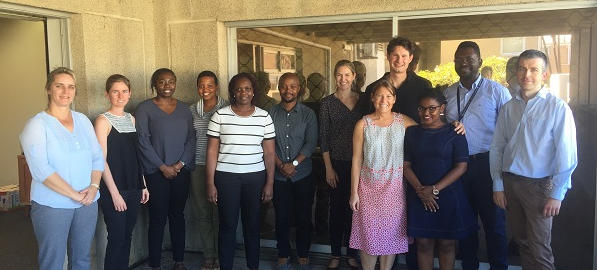
Staff at the UCT Data Center are actively involved in running the MPH course of the School of Public Health and Family Medicine and lead the module on the epidemiology of infectious diseases. In addition, they supervise the MPH and PhD students as well as undergraduate MBChB students undertaking their public health module. A number of UCT postgraduate students have transitioned to working in the health services of the Western Cape Department of Health and to research in resource-limited settings. This, together with our support for site investigators undertaking their own analyses, confirms their commitment to building local capacity for research.

The ISPM coordinates the PhD program of the Swiss School of Public Health SSPH+ and runs the Winter School for advanced epidemiological methods . Staff at ISPM are also involved in teaching the Master in Public Health (MPH) including courses on meta-analyses, evidence-based Public Health and writing journal articles. ISPM also share expertise through tutoring for grant writing, training to use REDCap a web-based electronic data capture tool hosted at the ISPM and conducting specialist courses on probabilistic data linkages and statistical analyses. Recent PhD graduates continue to work in HIV research.

